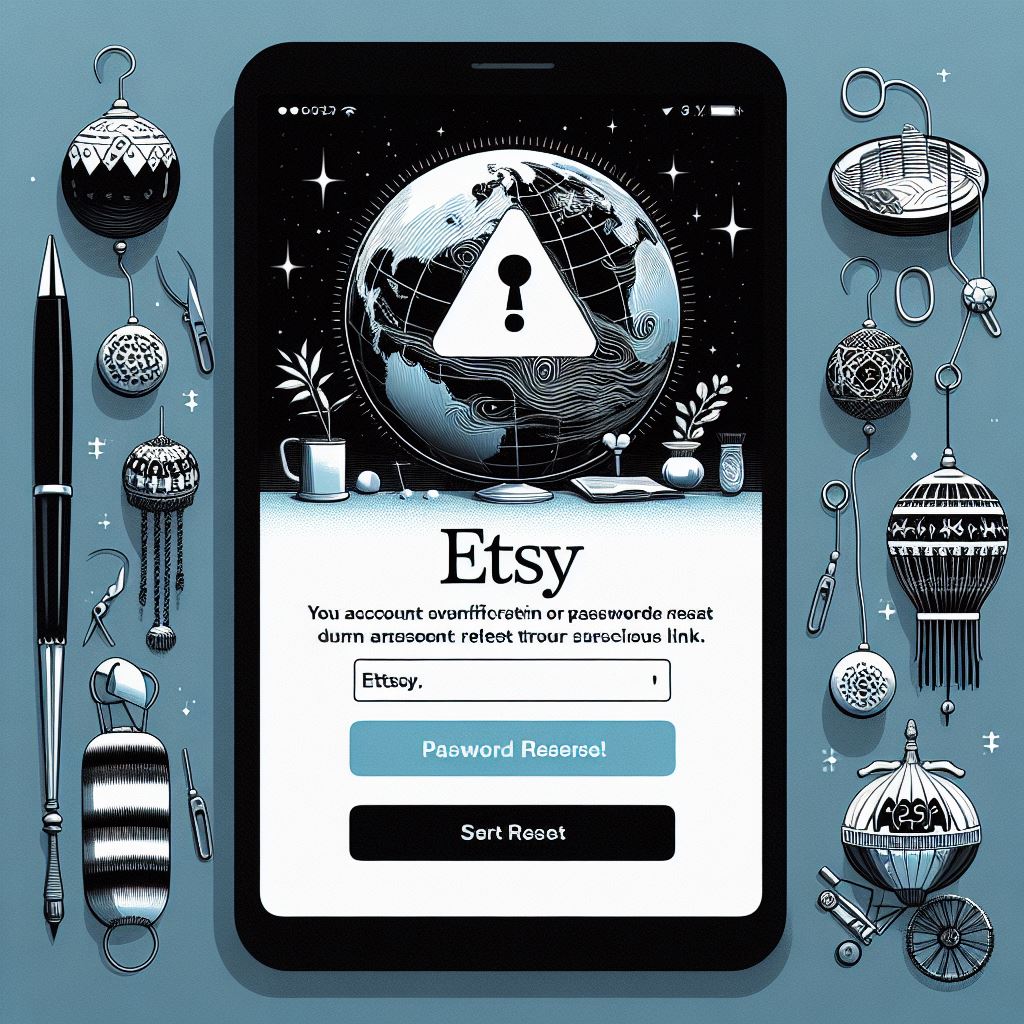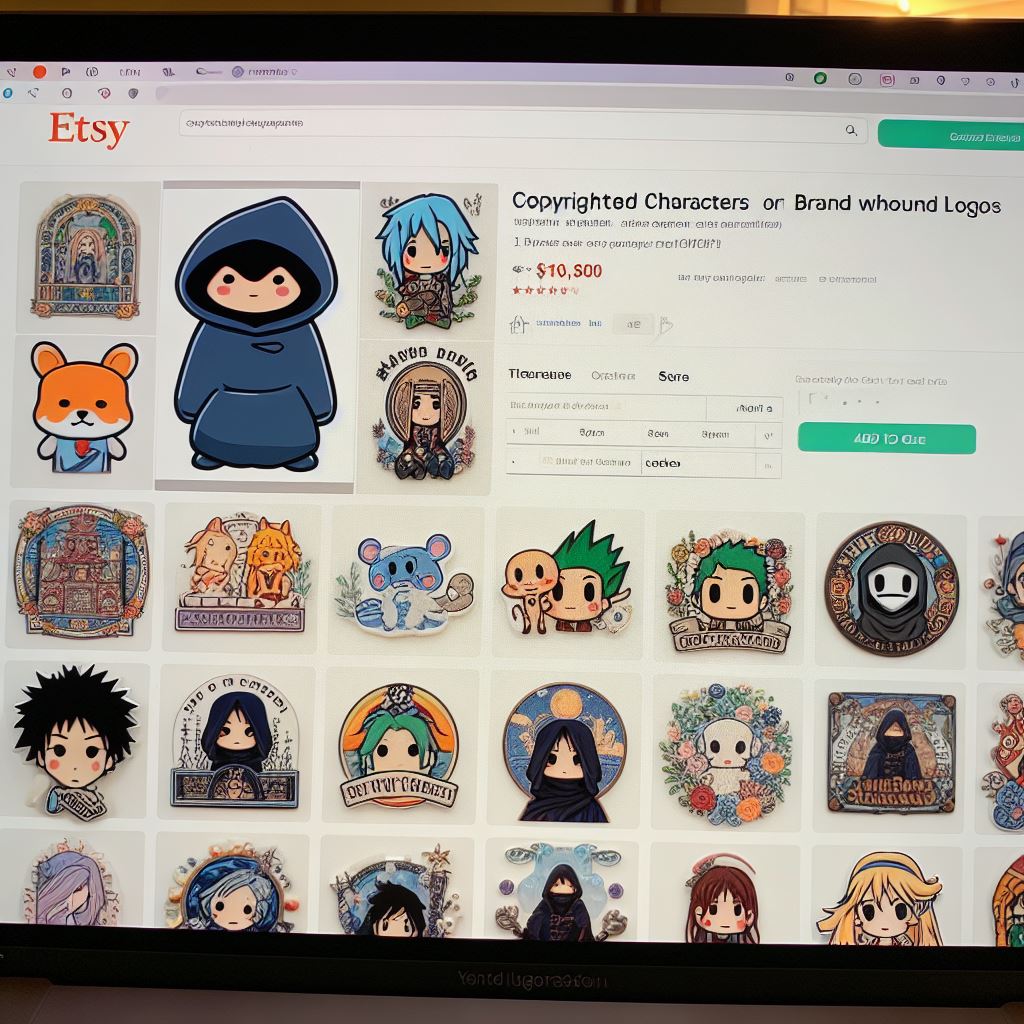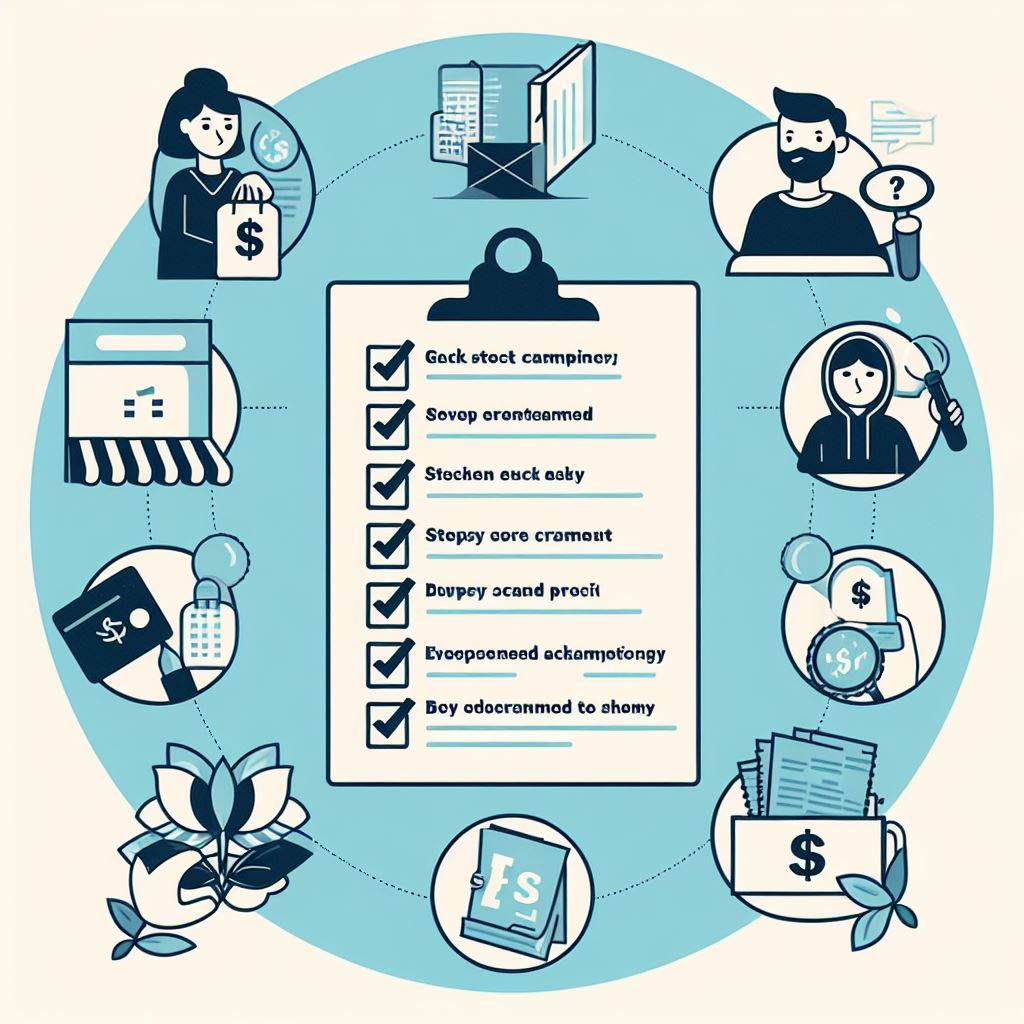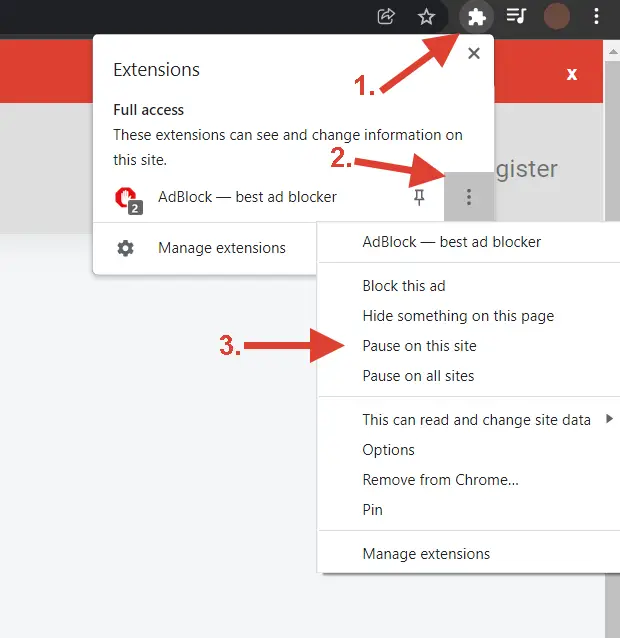Etsy has become a beloved online marketplace, a haven for unique handmade goods, vintage finds, and personalized treasures. It’s a platform where creativity thrives and shoppers can discover one-of-a-kind items that can’t be found anywhere else. But as with any popular online destination, Etsy has also attracted its fair share of scammers, looking to exploit both eager buyers and hardworking sellers.
Navigating this vibrant marketplace requires not only a keen eye for unique products but also a healthy dose of caution. This blog post will guide you through the shady world of Etsy scams, equipping you with the knowledge and tools to spot fraudulent activity and protect yourself from becoming a victim. We’ll expose common scams, teach you how to identify red flags, and outline steps to take if you find yourself entangled in a fraudulent transaction.
- Understanding the Landscape of Etsy Scams
- Unmasking the Scammers: Common Etsy Scams to Watch Out For
- Arming Yourself: How to Spot an Etsy Scam
- Fighting Back: What to Do If You’ve Been Scammed on Etsy
- Etsy’s Protection Measures: A Layer of Defense
- Secure Shopping Beyond Etsy: Additional Tips for Staying Safe
- FAQ Section: Addressing Common Questions
- Conclusion: Etsy Savvy Shopping
1. Understanding the Landscape of Etsy Scams
Etsy’s success has, unfortunately, made it an appealing target for scammers. The platform boasts a massive user base of both buyers and sellers, many of whom are drawn to the allure of handmade, unique goods. This inherent trust in handcrafted items, combined with the potential for less tech-savvy users on a creative platform, creates an environment that scammers can exploit.
Moreover, scammers prey on human emotions. They know that buyers are excited to find deals and are willing to overlook certain red flags if it means snagging a bargain. Conversely, they also understand that sellers, eager to make sales and build their businesses, might be more vulnerable to scams that promise increased profits or exposure.
2. Unmasking the Scammers: Common Etsy Scams to Watch Out For
Etsy scams come in various forms, each targeting different vulnerabilities. Here are some of the most prevalent scams you need to be aware of:
A. Counterfeit/Misrepresented Goods:
This is the most common type of Etsy scam. Sellers might:
- Claim mass-produced items are handmade: They use stolen images from legitimate artisans or companies and try to pass off factory-made items as handcrafted goods.
- Use inflated prices: They bank on the perceived value of “handmade” and try to charge exorbitant prices for items readily available elsewhere for much less.

Examples:
- A recent case exposed on Twitter involved a shop that sold thousands of pieces of jewelry claimed to be “self-made” or vintage, which were actually cheap mass-produced items from AliExpress.
- Customer reviews often reveal bait-and-switch tactics, where buyers received low-quality items far different from the advertised handmade product.
B. Fake Listings/Shops:
- Entirely fraudulent stores: Scammers create shops with enticing listings, collect payments, and then disappear without ever sending any items.
Example:
- A buyer shared their experience of purchasing camera accessories from a seemingly legitimate shop, only to find the shop vanished a few days later with no shipping information provided. Although they were able to stop the payment through their bank, the scammers still obtained their personal information.

C. Shipping Shenanigans:
- Wrong Address Scam: Sellers intentionally ship items to incorrect addresses they control, making it difficult for buyers to receive their orders and claim refunds.
- Fake Tracking Numbers: Scammers provide bogus tracking numbers, leading buyers to believe their items have been shipped or delivered, when in reality, they never were.
D. Account Hijacking:
- Phishing tactics: Scammers use phishing emails, fake Etsy login pages, or malicious links to trick users into revealing their login credentials.
Impact:
- Buyers: Hackers can steal stored payment information, purchase items using your account, or change your contact details to lock you out.
- Sellers: Hackers can redirect payments to their own accounts, change shop information to mislead customers, or steal customer data for further exploitation.
Example:
- A former Etsy seller recounted her experience of having her account hacked after scammers used her old email address to request a password reset. They then attempted to intercept funds from recent sales and change her email address to gain complete control of her shop.

E. Price Manipulation:
- Multiple shops, varying prices: Scammers create multiple shops and list the same item at different prices to manipulate buyers. They often claim the cheaper listings are “out of stock” and try to steer buyers towards pricier options.
F. Off-Platform Payment:
- Avoiding protection: Scammers try to lure buyers off Etsy’s secure payment system, where transactions are protected, and pressure them to pay directly using methods that are difficult or impossible to reverse.
Methods:
- Gift cards
- Wire transfers
- Apps like Venmo, PayPal, or Cash App
- Cryptocurrency
G. Bonus Scams:
- Unauthorized Brand Use: Sellers might try to sell items that use trademarked logos or brand names without permission, misleading buyers into thinking they’re purchasing authentic goods.
- Unauthorized Reselling: Scammers buy cheap, mass-produced items from other platforms and resell them on Etsy as “handmade” or “unique,” deceiving buyers seeking genuine craftsmanship.

Now that you’re familiar with the common tactics Etsy scammers employ, let’s move on to how you can spot them before they strike.
3. Arming Yourself: How to Spot an Etsy Scam
Knowledge is your best weapon against scammers. By learning how to identify red flags, you can significantly reduce your risk of falling prey to fraudulent activity. Here’s a step-by-step guide to scrutinizing shops, listings, and seller behavior to spot potential scams:
A. Scrutinizing the Shop:
- Check for shop history: Look for established shops with a clear track record of sales and positive customer reviews. New shops with little to no history might be legitimate, but proceed with extra caution.
- Examine the language: Be wary of profiles with poor grammar, spelling mistakes, or awkwardly phrased sentences. Legitimate sellers typically take the time to present themselves professionally.
- Scrutinize product images: Be skeptical of generic or overly professional product images that seem inconsistent with “handmade” claims.

B. Investigating the Product:
- Reverse image search: If an item looks too good to be true or the images seem too perfect, run a reverse image search using tools like Tineye to see if those photos appear elsewhere on the internet.
- Shipping timelines and costs: Pay close attention to the estimated shipping times and costs. Unusually long timelines or high shipping fees without a reasonable explanation (such as international shipping or custom-made items) can be red flags.
- Read the fine print: Carefully examine the product description, looking for any hidden details or inconsistencies. Scammers often try to bury crucial information in lengthy descriptions or small fonts.
C. Analyzing Customer Feedback:
- Look for negative reviews: While a few negative reviews are normal for any shop, a high number of negative reviews, especially those mentioning scams or similar problems, should raise alarm bells.
- Assess positive reviews for authenticity: Don’t just skim the five-star reviews. Look for signs that they might be fake, such as generic wording, similar phrasing, or a large number of positive reviews all posted around the same time.
- Go beyond Etsy: Search for the shop or seller’s name on Google and social media platforms, using search terms like “[Shop/seller name] + review” or “[Shop/seller name] + scam” to see if any complaints or negative feedback appear elsewhere.
D. Observing Seller Behavior:
- Response time: Pay attention to how quickly the seller responds to your messages. A legitimate seller will typically respond within 24 hours. Slow or non-existent communication is a red flag.
- Requests for personal information: Be wary of sellers who ask for personal information beyond what’s necessary to complete the purchase (such as your email address, phone number, or social security number).
- Off-Etsy communication or payment: If a seller attempts to redirect you to an external website or insists on payment methods outside of Etsy, it’s a major red flag. They’re likely trying to avoid Etsy’s protections and scam you without recourse.
- Pressure tactics: Be skeptical of sellers who create a sense of urgency or pressure you into making a quick purchase. They might claim limited stock or offer special discounts that expire soon, hoping you’ll make a hasty decision without fully evaluating the situation.
E. Trusting Your Gut:
Above all, trust your instincts. If anything feels off about a shop, listing, or seller’s behavior, even if you can’t pinpoint exactly what’s wrong, it’s best to err on the side of caution and avoid the transaction.
4. Fighting Back: What to Do If You’ve Been Scammed on Etsy
If you believe you’ve been scammed on Etsy, don’t despair! Taking swift action can help mitigate damage and potentially recover your funds. Here are the essential steps to follow:
A. Act Immediately:
Time is crucial in scam cases. The sooner you take action, the better your chances of resolving the issue and minimizing potential losses.
B. Steps to Take:
- Contact the seller directly: Start by reaching out to the seller through Etsy’s messaging system, clearly outlining the problem and providing any evidence to support your claim. Give them a chance to rectify the situation.
- Review shop policies: Check the seller’s shop policies regarding returns, refunds, and exchanges. Understanding their policies will guide your next steps if the seller is uncooperative.
- Open a case with Etsy: If the seller doesn’t respond or refuses to resolve the issue, open a case with Etsy support. Provide detailed information about the problem, your communication with the seller, and any relevant documentation. Etsy can mediate the dispute and potentially issue a refund.
- Document everything: Take screenshots of messages, listings, payment confirmations, and any other relevant information. This documentation will be valuable if you need to escalate the case or file a formal complaint.
- Contact your payment provider: If you paid for the item outside of Etsy (e.g., with PayPal, Venmo, a gift card, etc.), contact your payment provider and explain the situation. They might be able to help you dispute the transaction and initiate a chargeback.
- Report to authorities: For serious scams involving substantial financial loss or identity theft, consider reporting the incident to your local law enforcement or relevant authorities, such as the FBI’s Internet Crime Complaint Center (IC3).
- Change your Etsy password: If you suspect that your account details have been compromised, change your Etsy password immediately to prevent further unauthorized access.
- Freeze your credit: If you’ve shared sensitive information (like your social security number) with a scammer, consider placing a credit freeze with the three major credit bureaus: Experian, Equifax, and TransUnion. This will help prevent identity thieves from opening new accounts in your name.
- Monitor your accounts: Keep a watchful eye on your bank and credit card statements for any unusual activity. Report any unauthorized transactions to your financial institutions immediately.

Taking these steps will help you regain control of the situation and increase your chances of a positive outcome. Remember, you’re not alone – many Etsy users have faced similar situations. By taking action, you’re not only protecting yourself but also contributing to a safer online marketplace for everyone.
5. Etsy’s Protection Measures: A Layer of Defense
Etsy is not oblivious to the challenges of online scams. The platform has implemented various measures to protect its users and ensure a secure shopping experience. While these safeguards don’t eliminate the possibility of scams entirely, they do provide a crucial layer of defense:
- Dedicated Trust & Safety Team: Etsy has a team dedicated to investigating and addressing scam reports, taking action against fraudulent accounts to maintain the integrity of the marketplace.
- Seller Policies: Etsy has established clear guidelines for seller conduct, requiring accurate product descriptions, honest representation of items, and adherence to intellectual property rights.
- Secure Payment Methods: Etsy encourages buyers to use their secure on-platform payment options, offering both buyer and seller protection against fraudulent transactions.
- Buyer Resolution Center: Etsy provides a resolution center where buyers can open cases to address issues with orders or sellers, providing a platform for mediated dispute resolution.
- Reviews and Ratings System: Etsy’s review system fosters transparency by allowing buyers to share their experiences and rate sellers, enabling others to make informed purchase decisions.
While Etsy’s efforts contribute to a safer marketplace, it’s important to remember that you also play a crucial role in safeguarding yourself against scams.
6. Secure Shopping Beyond Etsy: Additional Tips for Staying Safe
While being vigilant on Etsy is crucial, maintaining good online security practices in general will further enhance your protection against scams, not just on Etsy but across the internet:
A. Strong Passwords and Two-Factor Authentication (2FA):
- Unique passwords: Create strong, unique passwords for each of your online accounts, including Etsy, your email, and any payment platforms you use.
- Enable 2FA: Whenever possible, enable two-factor authentication on your accounts. This adds an extra layer of security, requiring a code from your phone or email in addition to your password to log in.
B. Use a VPN for Public Wi-Fi:
Avoid using public Wi-Fi networks for online shopping or accessing sensitive accounts. If you must use public Wi-Fi, use a Virtual Private Network (VPN). A VPN encrypts your internet connection, shielding your data from prying eyes and making it much harder for hackers to intercept your information, even if you accidentally connect to a malicious network.
C. Employ Reputable Antivirus Software:
Ensure that all your devices (computers, phones, tablets) are protected by reputable, up-to-date antivirus software. Antivirus programs help detect and block malware, including those spread through phishing attempts or malicious links.
D. Review Your Bank Statements Regularly:
Make it a habit to review your bank and credit card statements frequently, looking for any suspicious or unauthorized transactions. Report any unfamiliar activity to your financial institution right away.
7. FAQ Section: Addressing Common Questions
Here are answers to some common questions that arise when discussing Etsy scams:
A. Is Etsy safe?
Yes, Etsy is generally a safe marketplace. The platform has dedicated teams and systems in place to protect buyers and sellers, and the vast majority of transactions occur without incident. However, as with any online platform, scams do exist. By staying informed about common scams, learning how to identify red flags, and practicing safe online habits, you can significantly reduce your risk of encountering fraudulent activity.
B. Will Etsy refund me if I’m scammed?
Etsy offers a buyer protection program called the “Etsy Money Back Guarantee,” which might cover you in certain situations, such as non-delivery of an item or if the item received doesn’t match the listing description. However, refunds are not guaranteed, and Etsy will investigate each claim to determine eligibility. It’s crucial to open a case with Etsy, provide detailed information and evidence, and cooperate with their investigation process to increase your chances of receiving a refund.
C. What happens if I never get my Etsy order?
If your Etsy order doesn’t arrive, follow these steps:
- Contact the seller: Reach out to the seller through Etsy’s messaging system, inquiring about the status of your order and requesting an update on the shipping timeline.
- Open a case with Etsy: If the seller is unresponsive or fails to provide a satisfactory explanation, open a case with Etsy Support. They can mediate the situation and potentially help resolve the issue.
- Dispute the charge: If you’ve paid for the item and haven’t received it within a reasonable timeframe, you can dispute the charge with your payment provider (e.g., your credit card company or PayPal).
D. Is it worth selling on Etsy?
Selling on Etsy can be a rewarding experience, offering a platform to showcase your creativity and connect with a global audience of potential customers. However, as with any business venture, there are pros and cons to consider:
Pros:
- Global reach: Etsy provides a platform to sell your products to customers worldwide.
- Creative community: Etsy fosters a strong community of artists, makers, and sellers, offering support and resources.
- Established marketplace: Etsy is a well-known and trusted platform, which can attract customers seeking handmade and unique goods.
Cons:
- Competition: Etsy is a competitive marketplace, and depending on your niche, you might encounter numerous sellers offering similar products.
- Fees: Etsy charges fees for listing items, processing transactions, and using certain features.
- Marketing and promotion: Building a successful Etsy shop often requires marketing and promotional efforts to stand out from the competition and attract customers.
E. How to tell if you’re really on Etsy.com
To make sure you’re on the real Etsy website and not a fake phishing site, always double-check the URL in your browser’s address bar. Legitimate Etsy pages will start with “etsy.com” or “help.etsy.com.” Be wary of any URLs that look similar but contain misspellings, hyphens, or unusual domain extensions.
F. How to report a scam Etsy Message
If you receive a suspicious message from someone claiming to be from Etsy or an Etsy buyer, do not respond. Instead, mark the message as spam to report it to Etsy and block future communication from that user. Here’s how:
- Go to Messages: Log in to Etsy.com and go to your Messages inbox.
- Select the message: Click on the suspicious message.
- Mark as Spam: Choose the “Mark as Spam” option, which will move the message to your spam folder and alert Etsy to the suspicious activity.

G. Is there a way to contact Etsy directly by phone?
Etsy doesn’t have a publicly listed phone number for general customer support. However, in certain situations, such as account access issues or specific problems requiring immediate assistance, you can request a callback from Etsy Support through their Help Center.
H. What can scammers do with just my email address?
While having your email address alone won’t give scammers full access to your Etsy account, they can still use it for phishing attempts, sending emails designed to trick you into revealing more sensitive information like your password or financial details. They might also use your email to target other online accounts linked to that address.
I. What if the scammer used a tinyURL/shortened link?
Scammers often use URL shorteners to disguise malicious links. It’s best to avoid clicking on any shortened links from unfamiliar sources on Etsy or elsewhere on the internet. If a seller provides a shortened link, ask them to provide the full URL instead so you can verify its legitimacy before clicking.
J. How can I tell if an Etsy review is fake?
Look out for these red flags to identify potentially fake reviews:
- Generic language: The review lacks specific details about the product or seller experience and uses vague, overly positive language.
- Similar wording: Multiple reviews use identical phrases or strikingly similar wording, indicating they might have been copied or generated by bots.
- Posting times: A large number of positive reviews all posted around the same time, especially for a new shop, could signal a coordinated effort to manipulate ratings.
- Over-the-top praise: The review reads like an advertisement or contains excessive praise that seems insincere or unrealistic.
8. Conclusion: Etsy Savvy Shopping
While Etsy offers a wonderful platform to discover unique and handcrafted items, it’s essential to approach your shopping experience with awareness and caution. Scammers are constantly evolving their tactics, so staying informed about common scams and recognizing red flags is crucial for protecting yourself. By following the steps and tips outlined in this blog post, you can become a more savvy Etsy shopper, confidently navigating the marketplace while minimizing your risk of encountering fraudulent activity.
Remember, your experiences and insights can help others stay safe. Share your own stories, tips, or questions in the comments below to contribute to a more secure and thriving Etsy community. Let’s work together to create a safer online marketplace for everyone!
Try these free tools by Topbubbleindex
If you're looking to get started with print-on-demand, Topbubbleindex is the perfect place to begin. We offer all the digital marketing tools you need to be successful, and we're committed to keeping them free forever. Below, you'll find a few of the free tools we offer to help you get ahead of the competition and make sales easily.
- Redbubble Keyword Research
- Redbubble Tag Generator
- Redbubble Trends Finder
- Etsy Keyword Research
- Etsy Tag Generator
- Etsy Trends Finder
- Design Editor
- Image Background Remover
- Image Portrait Generator
- Blogs
- Calendar Holidays
And still counting! If you're still not impressed, try the Topbubbleindex tools for free. Don't hesitate to contact us for suggestions, complaints, or just feedback. We are always working on to keep the Topbubbleindex better.

